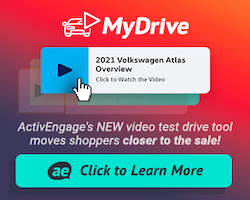Try brushing your teeth with the opposite hand, or take a different route to work, and see what happens.
It’s been well written that we fall into routines. We look at automotive e-commerce the exact same way. All of us continue to try to fix the buying process, and that’s why the e-commerce transition continues to fail.
As I’ve said many times over the years, one of the critical barriers to selling a car over the Internet is that people have a preconceived notion of how they should buy a car. As many of you may already know, I sold cars over the Internet (as much as technology would allow) for six years. Although there were plenty of signals of an underlying weakness in the various programs, the real moment of clarity occurred when I was working on a direct buy program for AutoNation.
As many of you may already know, I sold cars over the Internet (as much as technology would allow) for six years. Although there were plenty of signals of an underlying weakness in the various programs, the real moment of clarity occurred when I was working on a direct buy program for AutoNation.
After conducting some follow-up, I discovered a customer had purchased locally – even after presenting them 100% of what they asked for. The customer confirmed that we had the exact car they wanted, option for option, at the best price. Yet, for some reason, all of the customer’s logic was overridden. It was too far removed from his/her research to buying routine. They just felt an underlying need to purchase the vehicle locally.
For those of us who have worked on a dealership floor, selling cars becomes part of a routine.
Customers say yes.
Vehicle gets prepped.
Paperwork gets signed.
Vehicle drives over curbs.
Rinse and repeat.
It happens so much that we don’t realize the transaction is an isolated one, that won’t be repeated for several years. We forget that it’s special. Instead, we feel like our efforts somehow overcame decades of ingrained car purchasing behavior. No matter how stellar that isolated transaction might have been, it doesn’t happen at an interval where, in the customer’s mind, it becomes the norm.
In the meantime, the entire automotive ecosystem continues to fall into another related routine. Since the dawn of the Internet; millions of dollars and man-hours have been thrown at creating solutions that create a novel buying experience. Although millions of cars are sold, those same customers didn’t return to the market for 5, 6, or 7 years (as of August of 2016, NADA pegs the average loan schedule at 68 months, for those who are keeping score). Some haven’t returned at all. Those who came back returned to a new purchase pathway that didn’t resemble the “new purchase pathway” they followed before.
Even if their brain tried to reference the new routine, what was being presented didn’t resemble what they were referencing. Like anyone faced with that situation, their brains revert back to what they understand. The same mechanism that controls how you get back and forth to work, or how you brush your teeth, also projects an image of how you should buy a car.
If we want to move customers into an e-commerce relationship, we need start by creating new and repetitive routines.
How? It’s actually quite simple.
Instead of focusing all of our e-commerce efforts on selling vehicles, we should look at the continuously overlooked profit center inside of every franchised dealership: The service department.
Providing a customer maintains their vehicle, they will interact with a (preferably your) service department dozens of times between purchasing vehicles. If a dealership is lucky, its service writers will get to see a household’s vehicles every three months or three thousand miles, or eight times a year if Hubby and Wifey Smith are loyal customers. Again, assuming the dealership is super lucky, and those same Smiths alternate twenty-four-month lease cycles, they interact with the sales team once a year.
You tell me, who has a better chance of altering the routine… the department that delivers smiling faces eight times a year or the department that delivers smiling faces once a year?
Now that I’ve got your attention, go look in the mirror, and tell yourself you’ve fallen prey to your own unconscious habits. For a person who built their career on selling cars online, it’s a tough pill to swallow, but I’m ready to admit it to myself. All of the things we’ve been offering to customers on the sales side in the hopes of creating an e-commerce relationship aren’t enough to change a customer’s routine.
The shopping carts, click-to-calls, live chats, no matter how fancy these things are, do nothing to alter the customer’s baseline model of how to interact with a car dealership. As soon as these tools drive a transaction, the relationship then reverts back to calling the dealership, or just showing up, to schedule routine maintenance on the vehicle.
…let that simmer for a second.
If you want to reinvent the wheel, start at the hub. If the automotive industry wants to drive change on the retail side of the business, it must focus its efforts where customers interact most. All of the whiz-bang technology that’s meant to create a seamless digital experience should start on the service side. If we can change a customer’s routine way of interacting with a dealership, then we can cultivate a way to change the way they purchase their vehicles in the future.
Stop throwing money at a moving target five years from now, and invest that money in a future you can create today.
What are you currently doing in your service department to create a seamless experience at your dealership?









Current Discussion Topics